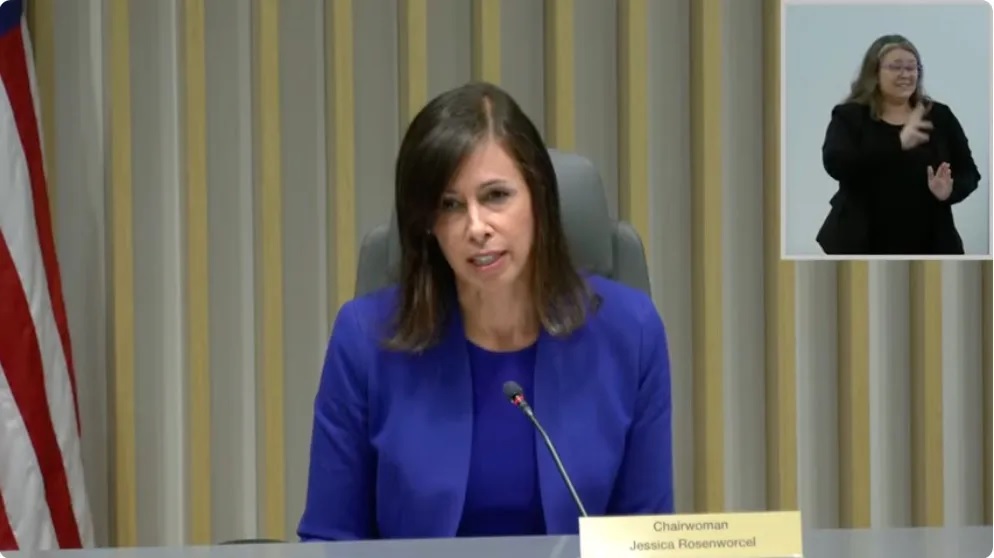
WASHINGTON, D.C.—The FCC has rejected arguments by the National Association of Broadcasters and station group owners that changes in ownership rules are long overdue by completing its 2018 Quadrennial Regulatory Review and issuing an Order that preserves and strengthens existing station ownership rules.
The agency had been ordered to complete the long delayed 2018 Quadrennial Regulatory Review rule by Dec. 27. It is already working on the 2022 Quadrennial Regulatory Review.
In the Dec. 26 ruling the FCC declined to make substantial changes to the ownership rules for TV and radio stations . It also clarified its approach situations where one of the top four TV stations acquired the programming of another top four station in a market and moved it to a LPTV or a multicast channel. In the new Order it will no longer allow the programming to be transferred to an LPTV or multicast station.
Chairwoman Jessica Rosenthal issued a statement defending the decision and the two Republican appointed commissioners issued statements criticizing the decision.
In making the decision, the commission rejected arguments by the NAB and others that the FCC should loosen ownership rules to help broadcasters better compete in the current media landscape, which has been transformed by the rise of streaming and increased competition from digital media.
“For decades, the Federal Communications Commission has had rules that limit the number of broadcast stations a single entity can own,” Rosenthal said in a statement. “This approach is a product of the Communications Act and the values in the law that have always informed our approach to media policy—support for localism, competition, and diversity of ownership. These values support jobs and journalism. They are important. Even as times change, these values remain. So does the law. Our approach here is consistent with the Communications Act and other laws that Congress has passed to address media markets, including the Consolidated Appropriations Act of 2004, which limits the number of television stations a single entity can own nationwide.”
Rosenthal also stressed that “at this point only three core rules remain. No entity can own all the television stations in a single market, with a case specific request necessary to own more than one of the top four stations. No entity can own all the radio stations in a single market. There is also a restriction on the national combination of two of the four big television networks—ABC, CBS, Fox, and NBC.”
“This decision updates the application of these rules,” she added. “With respect to radio, it clarifies our approach to subcaps and the contour-overlap methodology used to asses stations. With respect to television, it closes a loophole that involves the transfer of station affiliation to a multicast stream or low-power station that can be used to evade rules and exceed the limits in the Consolidated Appropriations Act of 2004.”
In a dissenting statement, Commissioner Brendan Carr complained that “The FCC has every reason to update this outdated set of broadcast radio and television rules. The law compels us to do so. The facts tell us to do so. And the public interest in promoting local news and information counsel in favor of doing so. Yet the rules will remain in place—impervious to those compelling forces.”
“Congress passed a law in 1996 that specifically directed the FCC to review these rules every four years and to eliminate them if they become unnecessary as a result of competition,” he continued. “How much has the market evolved in the intervening years? Hulu, Netflix, Disney+, ESPN+, Amazon Prime Video, Sling TV, Apple TV, YouTube, YouTubeTV, Tubi, Vudu, Freevee, Crackle, Pluto TV, NBC News Now, CBS News Streaming Network, CBS Sports HQ, Peacock, The Roku Channel, Paramount+, Max (nee HBO Max), BritBox,DIRECTV Stream, AT&T Now, FuboTV, Pandora, Spotify, SiriusXM, Apple Music, Amazon Music, and other online audio and video streaming services too numerous to quantify or recount have all emerged and fundamentally altered the competitive landscape.
"Unfortunately, the Commission has taken an ostrich-like approach to this requirement in nearly every one of its quadrennial reviews, including the instant review," Carr continued. "Indeed, the Commission has consistently ignored Congress’s deregulatory mandate under the statute, the realities of the modern media marketplace, and the many ways that Americans now consume news, information, and entertainment programming. This failure does not serve anyone’s interest, as a broad range of stakeholders have made clear in this record—once again. But despite a record bursting with evidence of a vibrant media marketplace, the Commission continues to advance the fiction that broadcast radio and broadcast television stations exist in markets unto themselves.”
The American Television Alliance, an advocacy group for pay TV providers, hailed the commission's decision.
“We applaud the FCC’s efforts to help consumers by closing loopholes in its broadcast ownership rules," the group said. "For too long, these loopholes have allowed broadcasters to control distribution of two, three, or even all four major networks in markets throughout the country,” said ATVA spokesperson Cora Mandy. “This is part of the reason broadcasters have been able to raise their rates by more than 5000 percent since 2006—even while viewership for these stations has dropped 45 percent during the last decade. Today’s action promises some long-awaited relief for consumers and their pocketbooks.”
The full Order can be found here.







